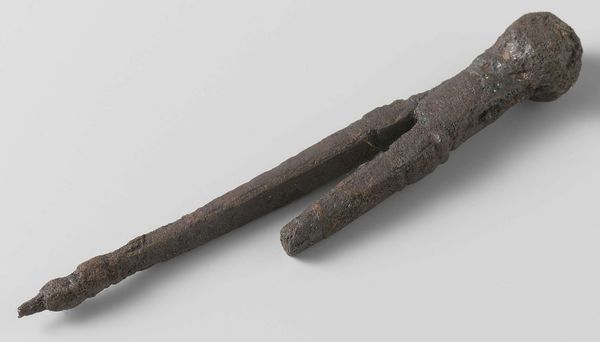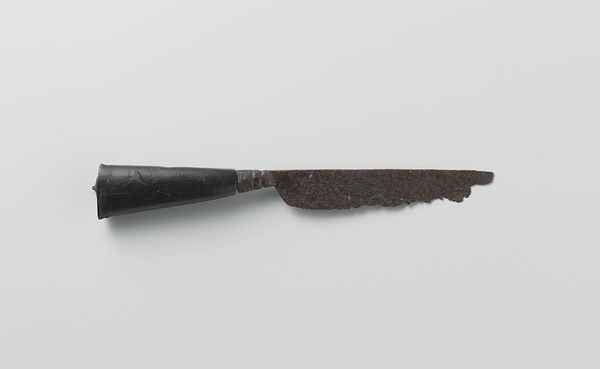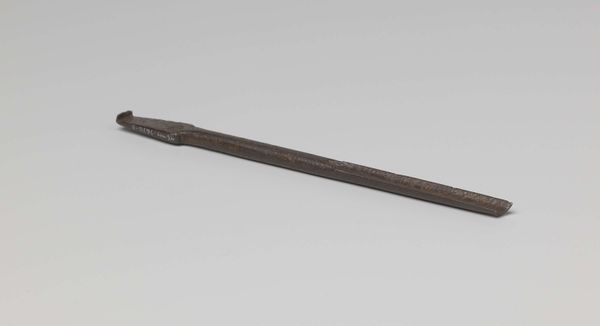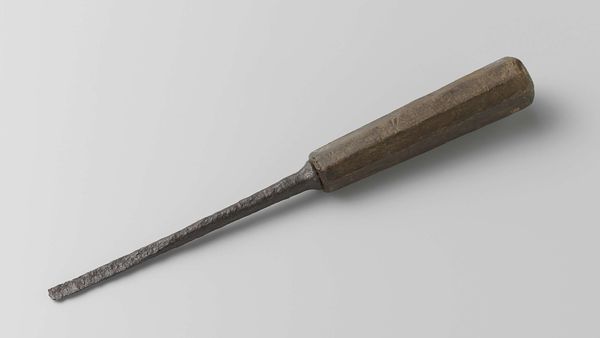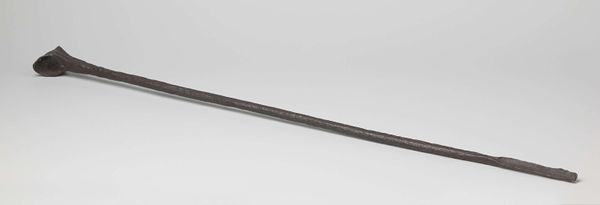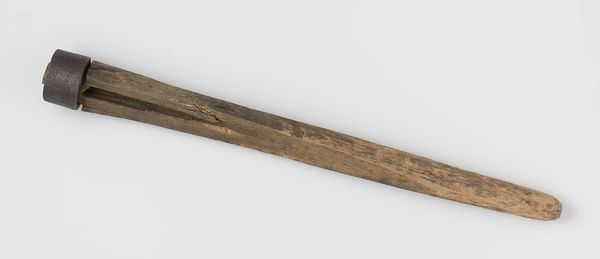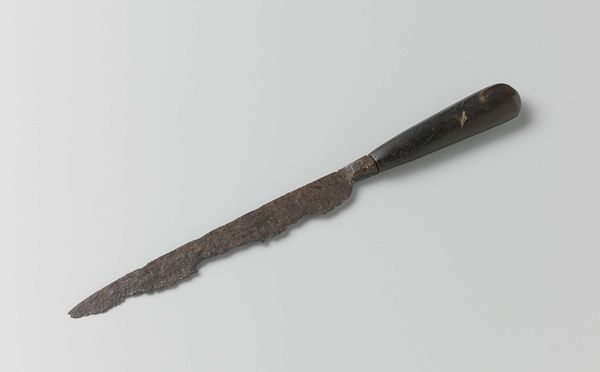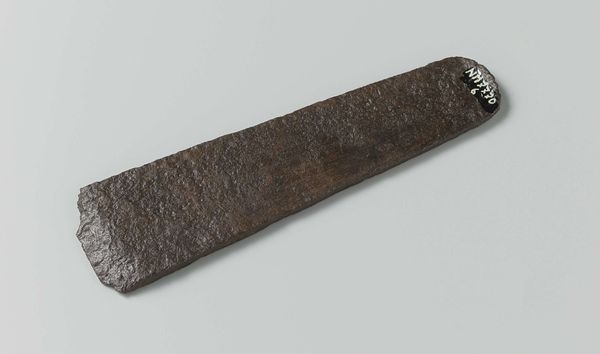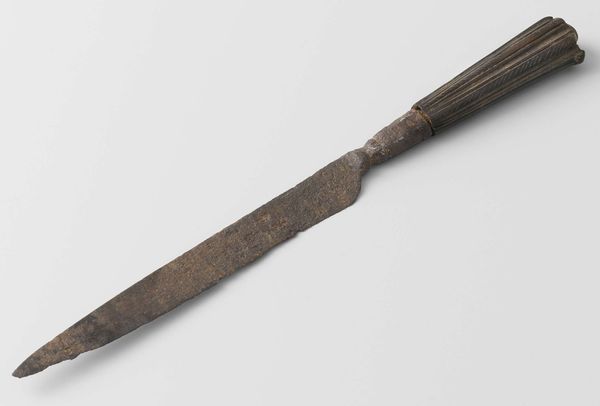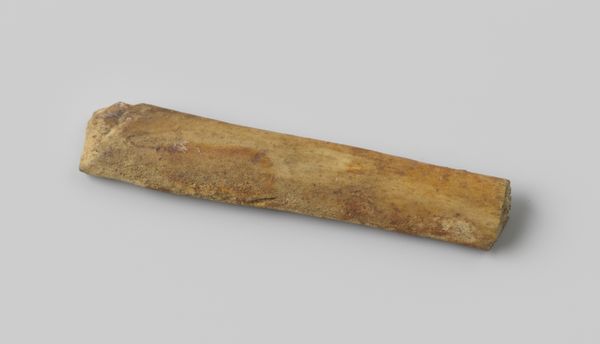
print, metal
# print
#
metal
Dimensions: length 24.4 cm, width 1.7 cm, depth 0.4 cm
Copyright: Rijks Museum: Open Domain
Curator: Looking at this object, "Vijl, plat zonder inkepingen," a file made sometime between 1590 and 1596, now held at the Rijksmuseum, I immediately consider its inherent capacity for agency and how it can extend a person's capability. Editor: It seems unassuming at first glance, almost brutal in its simplicity, wouldn’t you agree? I’m struck by the potential labor embedded within that metal; it feels like the quiet embodiment of craft and exertion. Curator: Exactly, it's interesting to consider that at the time it was created, the file could be seen not just as a tool, but also potentially as a symbol of broader social hierarchies. Who owned these? How might they affect the way craft guilds or workshops were run at the time? What labor structures does its existence presuppose? Editor: Let’s not forget the maker of the tool, also engaged in a kind of specialized labor! One craftsman enabling other forms of craft. You can almost feel the rhythm of its creation. What does it tell us about Dutch metalworking techniques of that period? How accessible would these have been, materially and economically? Curator: And considering its function, to smooth and refine, it’s really an allegory for the power structures within society itself, one which demands precision and conformity, particularly, as you suggested, labor-intensive social relations. Think about the broader implication of Dutch mercantile activity at that time—what were they refining and reshaping on a global scale? How complicit are "neutral" tools in these complex exploitative practices? Editor: True, though there’s also an element of resistance one could read. Skilled laborers who depend on such files also gained a type of bargaining power. And looking closely at the tool marks themselves—would you describe that as an assertive assertion of authorship by anonymous labor? These types of artifacts embody that duality; constraint and liberation at the same time. Curator: Well, on reflection, analyzing an ordinary object like this makes you reconsider labor structures through different critical lenses. Thank you! Editor: Yes! Tools like these help you look beyond romantic ideas of craftsmanship to appreciate both the material world and the invisible relations within it. A really interesting reflection!
Comments
No comments
Be the first to comment and join the conversation on the ultimate creative platform.


